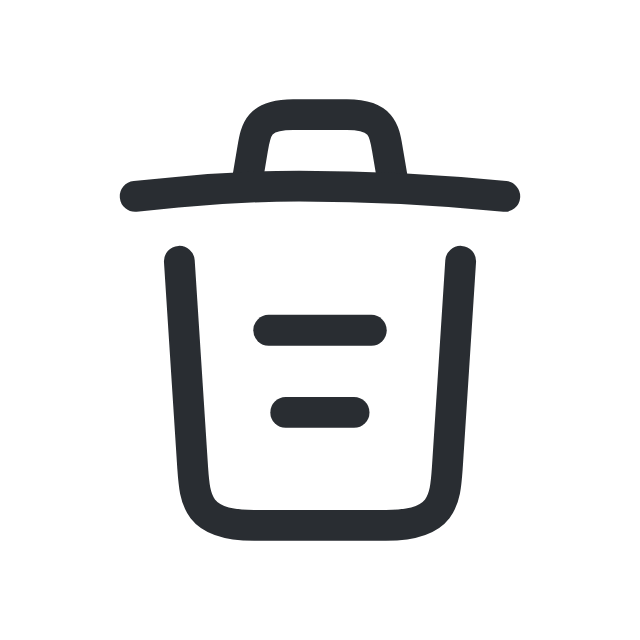Student Homelessness in Higher Education Resources
Housing insecurity and homelessness pose enormous barriers to success in college. Many college students face the challenge of housing insecurity, struggling to balance the demands of their program while worrying about where to sleep at night. This leads to lower academic performance and lower graduation rates. No student should have to face these difficulties.
There are many resources available to college students experiencing homelessness, but these resources can vary substantially from one community or institution to another. Below is a partial list of resources that students may be able to access. Overall, students experiencing homelessness are encouraged to tell the staff at their campus about their situation. Staff from multiple areas of the institution may be able to help, including the student services office, residential life, financial aid, faculty advisors, and others. Help can come in many forms, including from local nonprofits, government programs, and campus-specific resources.
General Housing Resources
- Year-round housing for on-campus students. Many campuses work to accommodate on-campus students who need housing during breaks and over the summer. Students who lack a place to stay during breaks should work with their student services and residential life offices to identify options.
- Federal housing assistance. The federal Department of Housing and Urban Development maintains this list of local housing authorities to contact for help accessing federal housing assistance programs, such as Section 8 vouchers and public housing.
- State and county housing assistance. Various forms of housing assistance are provided through state and county programs. Minnesota Housing, our State's housing finance agency, provides a list of services.
- United Way 2-1-1. A statewide hotline operating 24 hours a day, 7 days a week offering a wide range of confidential human services support, including help with housing insecurity. Dial 2-1-1 anywhere in Minnesota.
Community-Specific Housing Resources
Twin Cities:
- Youth Services Network. Combines information on shelter and services for youth and young adults ages 24 and younger by 13 social service agencies in the twin cities.
- YMCA Youth Resource Line. Connects youth and young adults ages 12 through 24 to community resources. Call 8am-8pm seven days a week: 763-493-3052.
- Drop-in Centers. These centers offer help finding housing plus a range of services including meals, hygiene, health clinics, and other support. Both serve youths including young adults up to age 24:
- Downtown Saint Paul: SafeZone Youth Drop-In Center. 130 East 7th Street, Saint Paul, 651-224-9644. Open 1pm-8pm Monday-Friday, serving ages 14 to 24.
- Downtown Minneapolis: YouthLink Drop-In Center. 41 N. 12th Street, Minneapolis, 612-252-1200. Variety of services for youth ages 16 to 24. Open Monday, Tuesday, Thursday and Friday 9am-6pm for 18 to 24 year-olds, 2pm-6pm for 16 to 24 year-olds.
- Avenues for Homeless Youth.Offers shelter, short-term housing programs, and other support services for youth ages 16 to 20.
- Minneapolis Community and Technical College Resource and Referral Center (MCTC students only). Connects students to a range of services, including housing, food, childcare, transportation, legal, and other kinds of assistance.
- St. Stephens Human Services compiles a handbook of the streets listing resources for people experiencing homelessness in Minneapolis and Saint Paul.
Rochester:
- Lutheran Social Services LINK program. For youth experiencing homelessness, ages 16 to 24. Provides food, clothing, and information on how to access short-term shelter. 1610 14th St. NW, Suite 300 (3rd floor), Rochester, 507-316-8273.
Duluth:
- Another Door Emergency Housing. For young adults ages 18 to 24. Call 218-391-5145. Provides short-term housing and other support services.
Mankato:
- The REACH Drop-in Center. 125 E. Liberty Street, Mankato. Monday-Thursday 1pm-5pm, ages 16 to 24. Provides a range of services including meals, hygiene, and support finding shelter and housing.
Other Resources
- SNAP Verification Training for Campus Staff. A brief training for financial aid/campus staff who work with students on SNAP eligibility, verification, and/or enrollment. This training is specific to the expanded federal eligibility criteria for college students related to SNAP during the COVID-19 pandemic.
- Emergency Assistance for Postsecondary Students (EAPS) Grant Program. The Minnesota Office of Higher Education administers this program to provide colleges with funds for emergency cash assistance to students experiencing housing/food insecurity and other hardships. Students at participating institutions can apply for cash assistance.
- Bridge to Benefits. Childrens Defense Fund of Minnesota provides a tool to help individuals find more public assistance programs.
- Food Pantries:
- Many Minnesota communities have food pantries.
- Minnesota Food Helpline 1-888-711-1151. Connects individuals to food resources statewide. Operates M-F 8:30am-4:30pm.
- Some colleges also coordinate food pantries, such as the Nutritious U food pantry at the University of Minnesota Twin Cities campus.
- TRIO student support services. For first-generation and low-income students.
- Scholarships. Scholarship opportunities exist targeting low-income college students and college students experiencing homelessness, such as this scholarship from Open Your Heart to the Hungry and Homeless.
- Fee waivers for admissions tests and applications. Low-income students can often waive fees for the ACT and SAT, and for college applications. Students who qualified for a fee waiver through the SAT are automatically granted application fee waivers from over 2,000 participating colleges.
- Resources for victims of domestic and intimate partner violence. The Minnesota Day One Crisis Line 952-884-0330 or 1-866-223-1111 provides 24-hour support for victims of domestic violence, sexual violence, human trafficking and sexual exploitation. Campuses also offer a range of services for victims of abuse.
- Resources for veterans. The federal and state departments of veterans affairs offer programs targeted at veterans experiencing housing insecurity. The federal VA operates a Community Resource and Referral Center in Minneapolis providing a full range of services, and the Minnesota Department of Veterans Affairs administers the SOAR program to connect veterans with more assistance. Postsecondary institutions also offer a range of student services specific to veterans. These can often be accessed through the offices of student services and financial aid.
- Resources for the LGBTQ community. Outfront Minnesota operates a 24-hour crisis hotline, 612-822-0127, option 3, offering information, support and counseling, including safe-house referrals.
Please Note:
- Accessing the Microsoft Powerpoint file(s) on this page may require you to
download the free PowerPoint Viewer from Microsoft
Quick Links
- Why College?
- Explore Your Interests & Careers
- Prepare at School
- Summer Academic Enrichment Program
- Earn College Credit in High School
- Recommended High School Classes & Graduation Requirements
- Advice for Students with Disabilities
- Succeed as an Adult Student
- Useful College Prep Resources
- Minnesota Goes to College!
- Get Ready Program Overview
- College Planning Presentation Information
- College Navigator Presentation Request Form
- Minnesota Indian Scholarship Program Outreach
- Competitive Grant Programs
- Dual Training Grant
- Public Engagement Calls
- "Life After Now" Podcast
- Certified Nursing Assistant Training
- Direct Admissions Minnesota
- Collecting Data from Minnesota Postsecondary Institutions
- Campus Financial Aid Administrator Resources
- Statewide Financial Aid Conference
- Campus Student Enrollment Reporting Resources
- Ordering Materials for Your Students
- Supplementing Your College Counseling
- Early Awareness Efforts
- Student Homelessness in Higher Education Resources
- Shared Library Resources
- MN FAFSA Tracker
- Campus Sexual Violence Prevention and Response
- Statewide FAFSA Filing Goal
- Financial Aid Estimator
- Online Applications
- About Financial Aid
- What Does College Cost?
- Tips for Lowering the Cost of Higher Education
- Institutional Payments
- Financial Aid You Don't Repay
- Financial Aid You Must Repay (Student Loans)
- Financial Aid You Earn
- Military Service Education Benefits
- Reduced Out-of-State Tuition Options
- Education Tax Benefits
- New Video Demystifies Paying for College
- Public Service Loan Forgiveness
- Useful Online Resources
- Ready, Set, FAFSA!
- Data Maps and Infographics
- Educational Attainment Goal 2025
- Minnesota Measures
- Minnesota P-20 Statewide Longitudinal Education Data System
- College Readiness & Participation Data
- Student Enrollment Data
- Degrees, Graduation Rates, Attainment & Outcomes
- Financial Aid Data & Trends
- Tuition & Fees Data
- Student Health and Safety
- Institution and Data Search
- Transfer Students
- Research Reports
- A-Z Data Table Index




